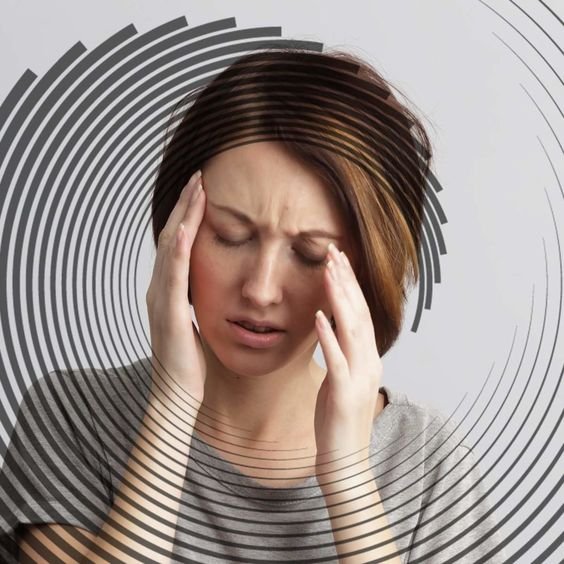Tinnitus: Ringing In The Ears And Its Association With Vertigo
Tinnitus, often described as a ringing, buzzing, or hissing sound in the ears, is a common auditory symptom that affects millions of people worldwide. While tinnitus can occur on its own, it is frequently associated with other conditions, and one notable connection is with vertigo, a sensation of dizziness or spinning. This article explores the intricate relationship between tinnitus and vertigo, delving into the potential causes, symptoms, and management strategies for individuals experiencing these interconnected auditory and vestibular challenges.
Understanding Tinnitus
Tinnitus is a subjective auditory sensation characterized by the perception of sound in the absence of an external source. This phantom noise can manifest in various forms, including ringing, buzzing, humming, or even roaring. It may be constant or intermittent, and its impact on an individual’s quality of life can range from mild to severe. Tinnitus can be a result of various underlying factors, making it a complex and multifaceted condition.
The Link with Vertigo
Vertigo, on the other hand, is a sensation of spinning or dizziness, often accompanied by imbalance. The association between tinnitus and vertigo is well-documented, and the co-occurrence of these symptoms can significantly impact an individual’s daily life. Understanding the underlying causes of this association is crucial for effective diagnosis and management.
Inner Ear Disorders
The inner ear plays a pivotal role in both hearing and balance, making it a key player in the connection between tinnitus and vertigo. Inner ear disorders, such as Ménière’s disease, vestibular schwannoma, and labyrinthitis, can contribute to the simultaneous occurrence of these symptoms.
Ménière’s Disease
Ménière’s disease is a chronic inner ear disorder characterized by episodes of vertigo, tinnitus, hearing loss, and a feeling of fullness or pressure in the ear. These episodes, known as “attacks,” can last for minutes to hours and significantly impact an individual’s daily life. The exact cause of Ménière’s disease remains unclear, but fluid buildup in the inner ear is believed to play a role in its onset.
Vestibular Disorders
Beyond Ménière’s disease, various vestibular disorders can lead to the combination of tinnitus and vertigo. Vestibular schwannoma, a benign tumor affecting the vestibular nerve, can cause both auditory and balance symptoms. Labyrinthitis, an inflammation of the inner ear, is another condition that may result in tinnitus and vertigo.
Diagnostic Approaches
Accurate diagnosis is essential for understanding the relationship between tinnitus and vertigo. A thorough medical history, audiometric tests, and vestibular assessments are often employed to identify the underlying causes. Imaging studies, such as magnetic resonance imaging (MRI), may be conducted to rule out structural abnormalities within the inner ear and the surrounding structures.
Treatment Strategies
Once a diagnosis is established, the focus shifts to managing both tinnitus and vertigo effectively. Treatment approaches may vary depending on the underlying cause and the severity of symptoms. In the case of Ménière’s disease, lifestyle modifications, dietary changes, and medications such as diuretics may be recommended to alleviate symptoms. Vestibular rehabilitation exercises can be beneficial for individuals with vestibular disorders, helping improve balance and reduce the impact of vertigo.
Medications and Therapies
Medications targeting specific symptoms, such as anti-anxiety drugs for stress-related tinnitus or vasodilators for vascular issues, may be prescribed. Cognitive-behavioral therapy (CBT) has shown promise in managing the emotional and psychological impact of tinnitus. In cases where underlying conditions, such as tumors, require intervention, surgical procedures or other medical interventions may be considered.
Lifestyle Modifications
Adopting certain lifestyle modifications can contribute to symptom management. Managing stress through relaxation techniques, maintaining a healthy diet, and avoiding triggers such as excessive caffeine or loud noises are steps individuals can take to mitigate the impact of tinnitus and vertigo on their daily lives.
Inner Ear Rehabilitation
For individuals experiencing vertigo, inner ear rehabilitation exercises are often recommended. These exercises aim to improve vestibular function, enhance balance, and reduce dizziness. They may involve head and eye movements designed to recalibrate the inner ear’s response to changes in position and movement.
Hearing Aids and Sound Therapy
In cases where hearing loss accompanies tinnitus, hearing aids can be a valuable intervention. Hearing aids amplify external sounds, helping mask the internal noise of tinnitus and improve overall auditory perception. Sound therapy, which includes white noise machines, nature sounds, or specially designed apps, can also provide relief by diverting attention away from the persistent ringing or buzzing.
Coping Strategies
The psychological impact of tinnitus and vertigo should not be underestimated. Individuals experiencing these symptoms may face challenges in concentration, sleep disturbances, and heightened stress levels. Coping strategies, such as mindfulness meditation, support groups, and counseling, can offer valuable tools for managing the emotional toll of these conditions.
Conclusion
Tinnitus and vertigo, when experienced together, present a unique set of challenges for affected individuals. The intricate relationship between these symptoms often involves underlying issues within the inner ear. By understanding the causes and implementing appropriate diagnostic and therapeutic strategies, healthcare professionals can help individuals manage the impact of tinnitus and vertigo on their daily lives. While there may not be a one-size-fits-all solution, a comprehensive and personalized approach can empower individuals to navigate the complex interplay of auditory and vestibular symptoms, improving their overall well-being and quality of life.



